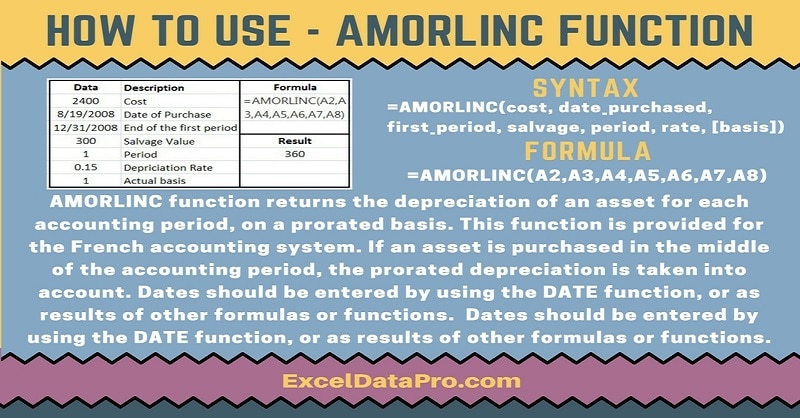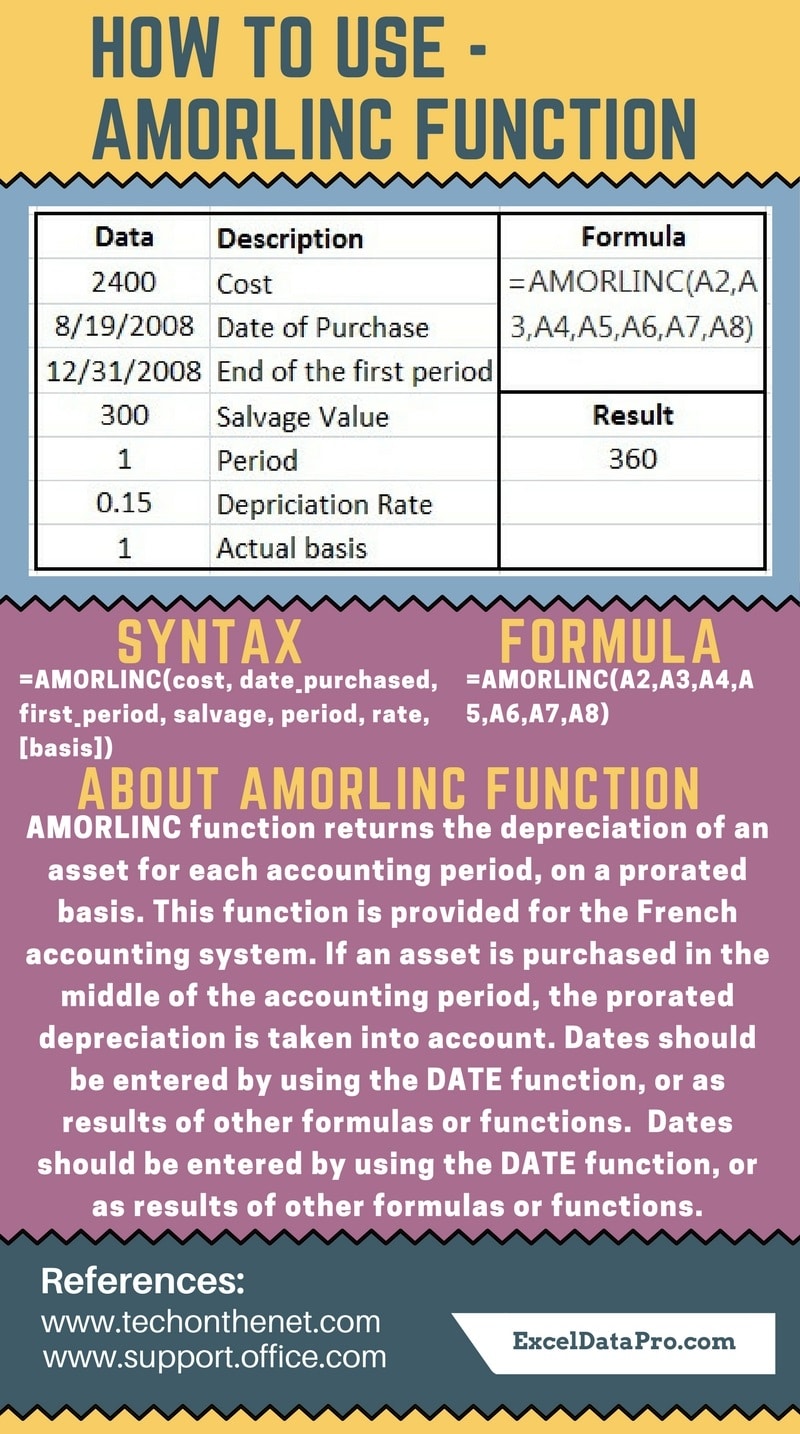
AMORLINC function returns the depreciation of an asset on a prorated basis for each accounting period. In other words, it calculates the prorated linear depreciation of an asset for a given accounting period.
The AMORLINC function is an inbuilt function in Excel and found under the category of Financial Function.
It is both a worksheet function (WS) and a VBA function (VBA) in Excel. You can enter this function as part of a formula in a cell of a worksheet.
Thus, you can use AMORLINC to calculate depreciation for each accounting period.
This function is provided for the French accounting system but general depreciation can also be derived by any accounting system by changing the basis.
According to the accounting rule, an asset is purchased in the middle of the accounting period, the prorated depreciation is taken into account.
Syntax for AMORLINC Function
=AMORLINC(cost, date_purchased, first_period, salvage, period, rate, [basis])
Arguments
Cost: The cost of the asset.
Date_purchased: The date that the asset was purchased.
First_period: The date of the end of the first period.
Salvage: The salvage value after the asset has been fully depreciated.
Period: The period in which to calculate the linear depreciation.
Rate: The rate of depreciation.
Basis: It is the type of year basis to use when calculating the depreciation. This argument is optional. If this parameter is omitted, it assumes that the basis is set to 0. It can be any of the following values
0 or omitted = 360 days (NASD method)
1 = Actual
3 = 365 days in a year
4 = 360 days in a year (European method)
I have created the infographics for the AMORLINC Function. With the help of these infographics, you can easily learn step by step process for using this excel functions.
Furthermore, Excel consists of many inbuilt functions which are helpful in the analytical and statistical study of number.
Simply follow the instructions in the infographics below:

Errors in AMORLINC Function
If the date_purchased is > first_period, AMORLINC returns #NUM! error value.
If salvage > cost, AMORLINC returns #NUM! error value.
If Invalid numbers are supplied for the salvage, period, rate or [basis] arguments then AMORLINC returns #NUM! error value. (i.e. if either: salvage < 0, period < 0, rate ≤ 0, or [basis] is any number other than 0, 1, 2, 3 or 4).
If date_purchased or first_period are not valid Excel dates, AMORLINC returns #VALUE! error value.
If any of the specified arguments is non-numeric, AMORLINC returns #VALUE! error value.
This function is applicable in Excel 2007 and above.
To learn other function like MID, QUOTIENT and KURT Functions, please click on the name of the function.
Additionally, you can download other accounting templates like Break Even Analysis Template, Salary Sheet Template and Invoice with GST Template from here.
We thank our readers for liking, sharing and following us on different social media platforms.
If you have any queries please share in the comment section below. I will be more than happy to assist you.
Leave a Reply